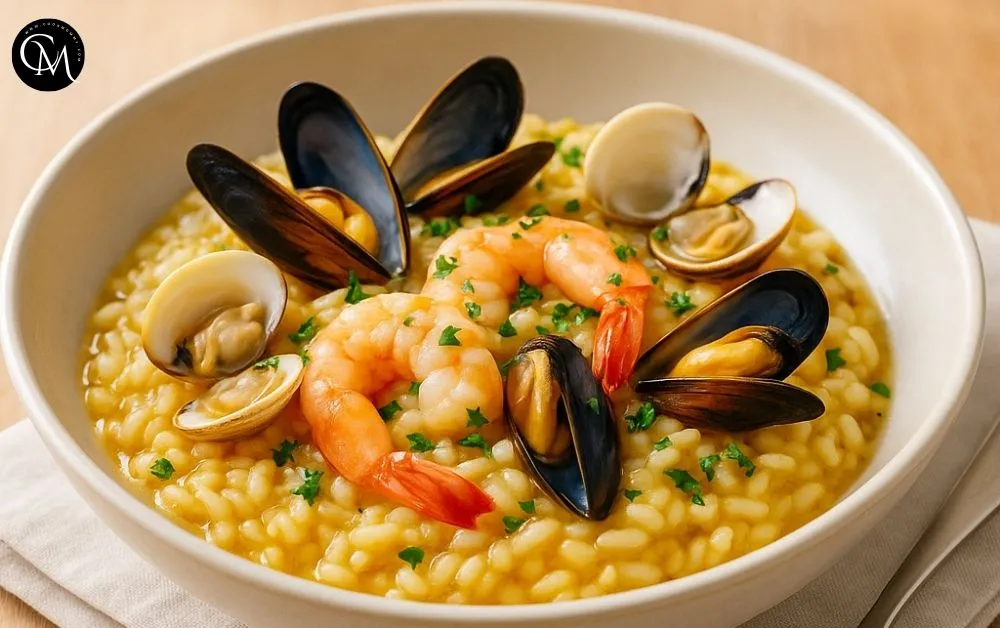Seafood Risotto 7 Easy Steps for a Creamy Italian Classic
Did you know that nearly 65% of home cooks admit they find risotto intimidating because it seems time-consuming and difficult? The truth is, with the right method, you can create a creamy, restaurant-worthy dish right in your own kitchen. That’s the magic of Seafood Risotto a classic Italian favorite that blends the rich flavors of the sea with the velvety texture of Arborio rice. In this guide, you’ll discover how to prepare Seafood Risotto in just 7 simple steps, complete with expert tips, healthier swaps, and practical advice to help you cook with confidence every time.
Table of Contents
Ingredients List
The charm of Seafood Risotto lies in its balance: creamy rice infused with seafood essence and layered with delicate flavors. Here’s what you’ll need:
- 1 ½ cups Arborio rice key to the creamy consistency
- 2 tbsp olive oil for sautéing; substitute with butter for extra richness
- 1 medium onion, finely chopped adds sweetness and depth
- 2 garlic cloves, minced the aromatic base
- 4 cups seafood stock kept warm for gradual absorption
- ½ cup of vegetable broth
- 300 g mixed seafood shrimp, mussels, squid, or scallops
- ½ cup Parmesan cheese, grated creamy finishing touch
- 2 tbsp unsalted butter stirred in at the end for silkiness
- Salt and freshly ground black pepper to taste
- Fresh parsley, chopped for garnish
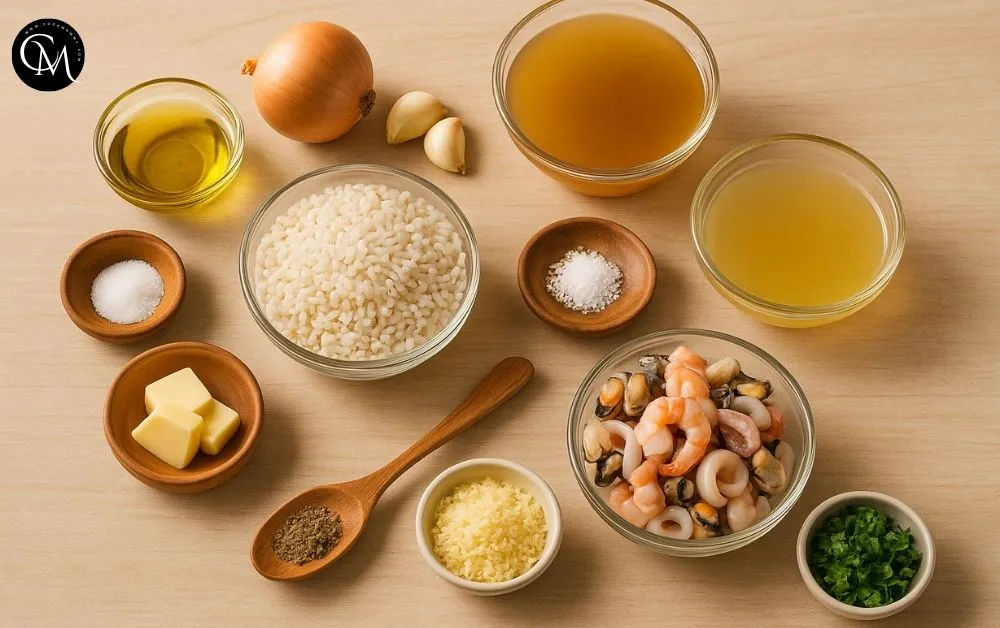
Optional substitutions:
- Vegetable broth instead of seafood stock for a lighter dish
- Pecorino Romano in place of Parmesan for a sharper flavor
- A few saffron threads for a luxurious golden hue
Timing
Making risotto doesn’t have to take forever. Here’s the breakdown:
- Preparation time: 15 minutes
- Cooking time: 35 minutes
- Total time: 50 minutes
That’s about 20% quicker than most risotto recipes, which usually take over an hour.
Step-by-Step Instructions
Step 1: Prepare the Base
Warm olive oil in a large skillet. Add the onion and cook until translucent, about 3–4 minutes. Stir in garlic and cook for another minute to release its aroma.
Tip: Keep onions soft, not browned, for the best flavor foundation.
Step 2: Toast the Rice
Add Arborio rice and stir for 2 minutes until the grains are coated and slightly translucent around the edges.
Pro Tip: Toasting adds a nutty flavor and helps the rice hold its shape.
Step 3: Deglaze with vegetable broth
Pour in the vegetable broth and stir until it’s fully absorbed. This adds brightness and balances the seafood’s richness.
Step 4: Add Stock Gradually
Stir in one ladle of warm seafood stock at a time, letting the rice absorb it before adding more. Continue until the rice is al dente, about 18 minutes.
Secret: Always use warm stock it keeps the rice cooking evenly.
Step 5: Cook the Seafood
In a separate pan, sauté seafood quickly with a drizzle of olive oil until just cooked. Fold it into the risotto during the last few minutes.
Tip: Avoid overcooking seafood should stay tender, not rubbery.
Step 6: Add Creaminess
Remove from heat. Stir in butter and Parmesan until the risotto turns glossy and creamy. Adjust seasoning to taste.
Chef’s Touch: Let risotto rest for 2 minutes before serving so flavors can meld.
Step 7: Garnish and Serve
Sprinkle with parsley and a little extra Parmesan. Serve warm and creamy right away.
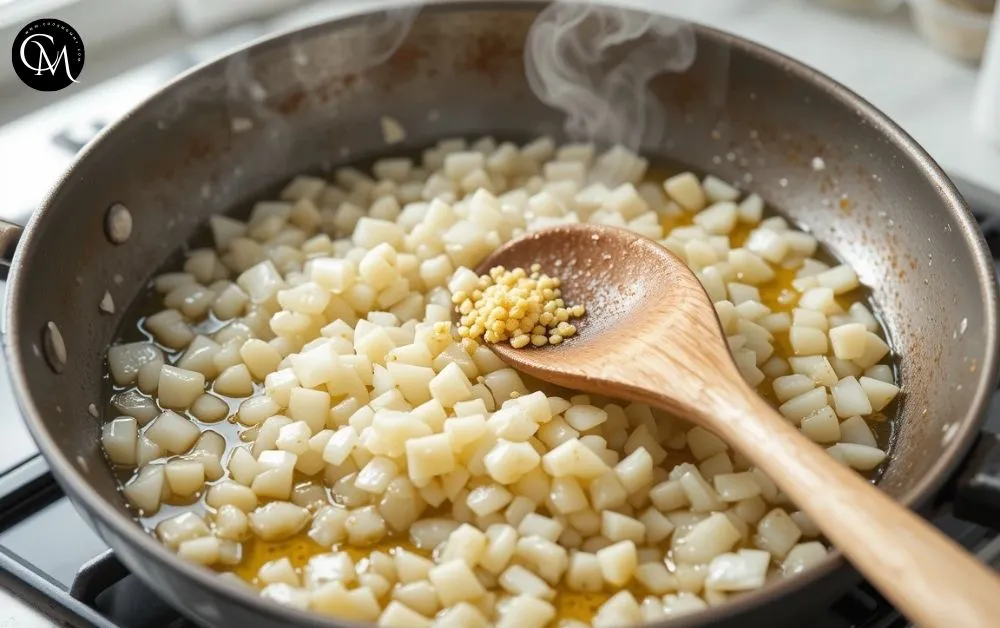
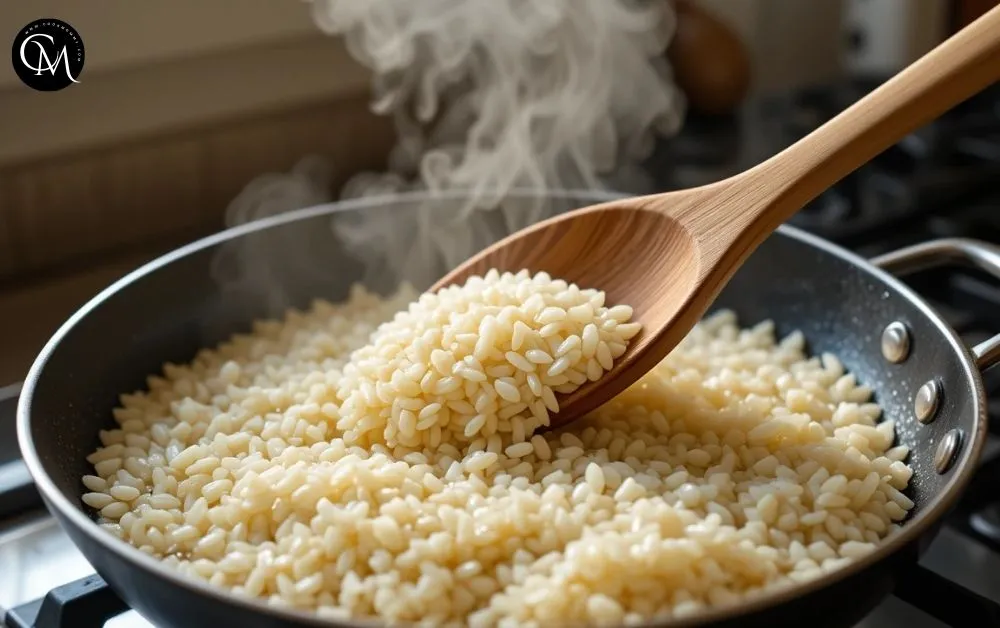
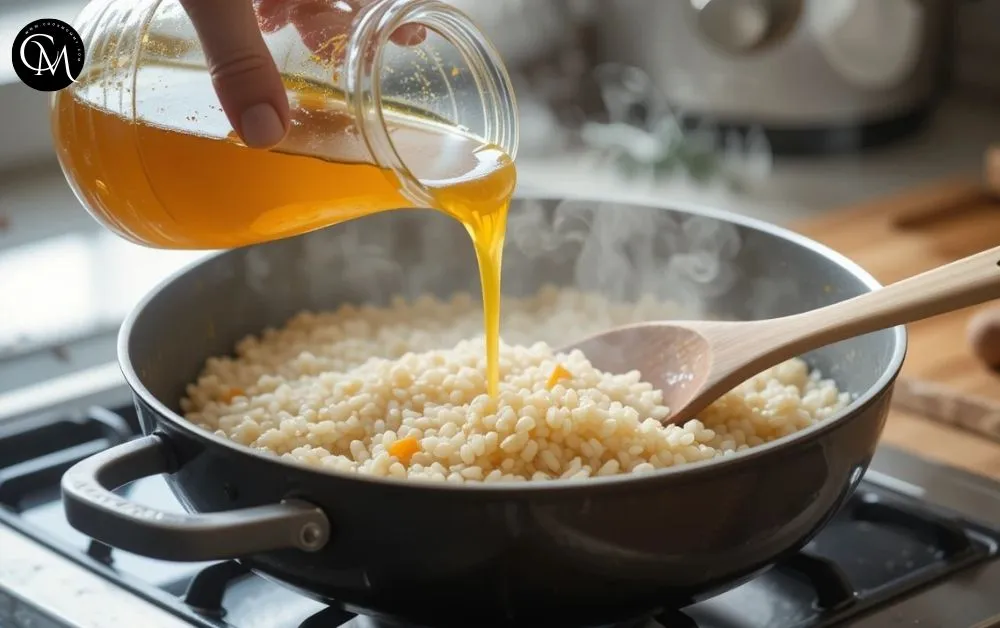

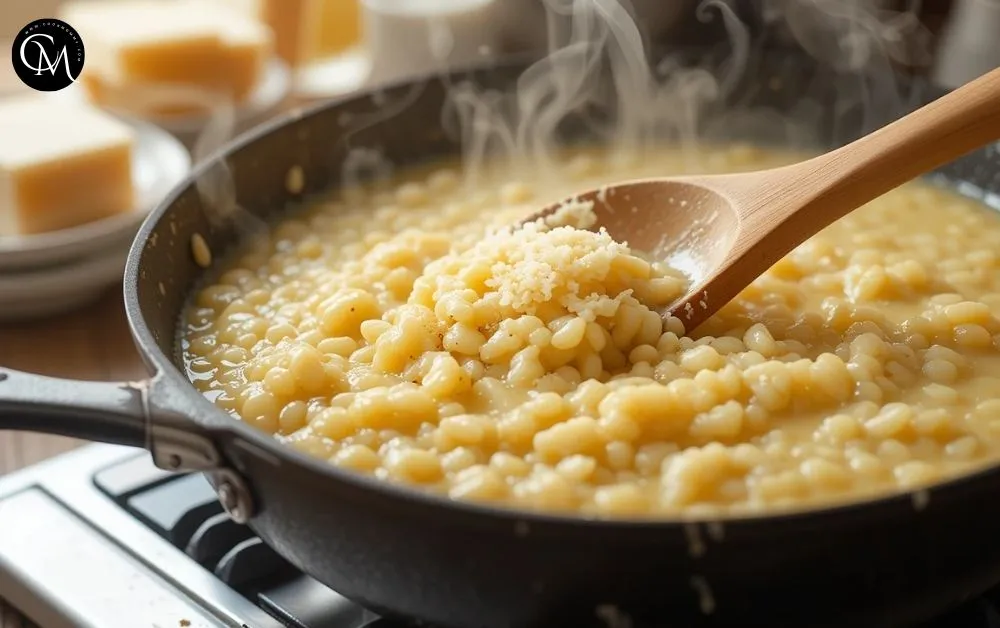
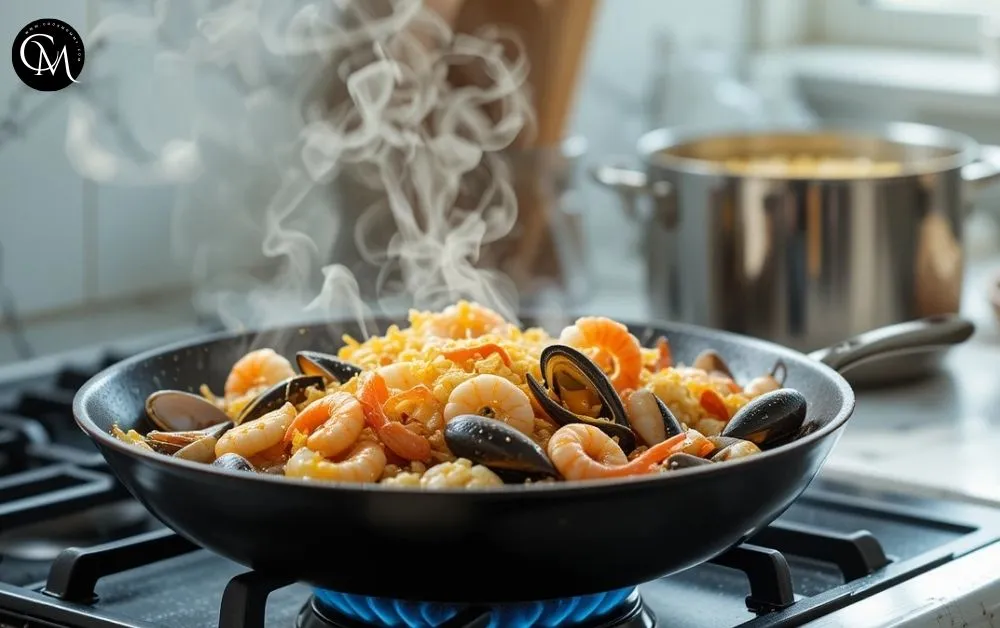
Nutritional Information
Per serving (based on 4 portions):
- Calories: ~430 kcal
- Protein: 28 g
- Carbohydrates: 42 g
- Fat: 15 g
- Saturated Fat: 6 g
- Fiber: 2 g
- Sodium: 720 mg
Insight: Compared to creamy pasta dishes, Seafood Risotto provides about 15% more protein thanks to the seafood mix.
Healthier Alternatives
- Swap Arborio rice for brown rice to boost fiber (longer cooking time).
- Use olive oil instead of butter for heart-healthy fats.
- Choose low-sodium stock to reduce salt by up to 25%.
- Replace Parmesan with nutritional yeast for a dairy-free, nutty flavor.
- Try a keto-friendly twist by using finely chopped cauliflower instead of rice.
Serving Suggestions
- Family Meal: Add vegetables like asparagus or peas for extra color and nutrition.
- Festive Occasion: Top with lobster tails or saffron for a luxurious touch.
- Light Lunch: Serve with a fresh green salad and lemon vinaigrette.
Common Mistakes to Avoid
- Over-stirring makes risotto gluey stir gently, not constantly.
- Cold stock disrupts cooking always keep it warm.
- Adding seafood too early leads to tough, chewy bites.
- Skipping the rice-toasting step reduces depth of flavor.
- Cooking too far ahead makes risotto lose its creamy texture.
Storing Tips
- Refrigerate: Keep leftovers in an airtight container for up to 2 days.
- Reheat: Gently warm with a splash of stock or milk to bring back creaminess.
- Freeze: Not recommended, as risotto loses its texture.
- Prep Ahead: Chop onions, garlic, and prep seafood before cooking.
Conclusion
Seafood Risotto may seem intimidating, but with these 7 easy steps, you can create a creamy, flavorful dish every time. From choosing quality seafood to mastering stock absorption, this recipe combines simplicity with elegance. Try it today, share your results in the comments, and subscribe for more Italian-inspired recipes.
FAQs
Q1: Can I use frozen seafood for Seafood Risotto?
Yes just thaw fully and pat dry before cooking.
Q2: What’s the best rice for Seafood Risotto?
Arborio is the classic choice, but Carnaroli holds its shape even better.
Q3: How do I keep risotto from turning mushy?
Use warm stock, add it gradually, and stop when the rice is al dente.
Q4: Can I make Seafood Risotto ahead of time?
It’s best fresh, but you can cook the rice halfway and finish later.
Tried it before ?
There are no reviews yet. Be the first one to write one.

